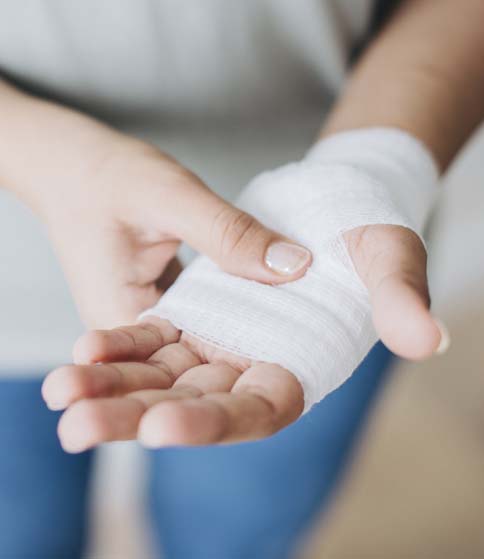
5 Strategies to Reduce Restaurant Workplace Injuries
Owning a restaurant can be a risky business, especially if potential workplace hazards are not identified and addressed. That’s why it is important for restaurateurs to have an injury risk management plan. More than just a safety or operations manual, an injury risk management plan is a document that predicts risks, estimates any potential impacts, and defines responses to injuries that could threaten the business.
Here are five strategies for reducing injuries for your restaurant that can help reduce on-the-job injuries or illnesses:
1. Identify potential “problem areas”
The first step to reducing the chance of workplace injuries is to identify potential hazards. Here are some of the common restaurant safety risks and ways to mitigate them:
- Slips, trips and falls. According to the Bureau of Labor Statistics, slips, trips and falls account for more than 25 percent of all workplace injuries. Regularly inspect floors for wet spots or slick patches, especially near sinks and dishwashers. Have a frequent floor degreasing schedule for fryer and grill areas. Keep a mop and bucket handy for quick clean-ups and require employees to wear closed-toe shoes with slip-resistant soles.
- Burns Ovens, deep fryers and boiling water can put kitchen staff at risk for burns. Fortunately, this risk can be minimized by providing workers with proper personal protective equipment (PPE) such as oven-safe gloves, mitts and aprons.
- Cuts and lacerations. It is important that all workers understand safe knife handling techniques to avoid the possibility of a cut, puncture or laceration. Employees should keep knives sharpened, cut away from their bodies and wear cut-resistant safety gloves. The Occupational Safety and Health Administration (OSHA) also provides specific knife safety guidelines.
- Chemical exposure. Both front- and back-of-house workers can be exposed to potentially hazardous cleaners and disinfectants, which could cause respiratory illnesses or skin reactions if handled improperly. Make sure workers wear the required PPE when handling such materials.
- Ergonomic injuries. Restaurant staff are on their feet and on the go for nearly their entire shift, which can cause back, leg or neck pain. Lifting heavy trays, boxes and cooking pots can also cause muscle injuries. Make sure employees take breaks to get off their feet and that everyone follows proper lifting techniques to avoid back injuries.
2. Provide training for all employees
Restaurant injury risk mitigation plans shouldn’t just apply to certain employees, such as kitchen staff. They should address all employees, front of house and back of house. All workers should receive training on how to handle equipment safely and how to prevent injuries to themselves and others. In addition, be sure to review comprehensive safety procedures that address the problem areas identified during the risk management analysis. The best training includes a mix of both theoretical and hands-on practice.
3. Keep the restaurant clean and organized
It may sound obvious, but keeping the restaurant clean and clutter-free can help reduce the likelihood of a workplace accident, such as a slip, trip or fall. Make sure equipment is properly stored when not in use. Stockrooms should be organized, with heavier items in easy reach. Keep walkways and entryways cleared of debris, and regularly sweep, mop or vacuum floors.
4. Maintain restaurant equipment
Equipment such as dishwashers, refrigerators, ovens, meat slicers, blenders, and coffee makers are essential to a restaurants operation. Make sure equipment is regularly serviced, well-maintained and has all guards in place to help prevent employee injuries.
5. Make sure to carry the appropriate licenses and insurance
Restaurateurs are required to carry certain credentials, such as a business license and food service (and in some cases, alcohol) permits. In addition, it is important for employers to carry workers’ compensation insurance, which helps cover business loss and out-of-pocket costs should employees get sick or hurt on the job.
Risk mitigation should be an ongoing priority for all business owners in the food service industry. By having an injury risk management plan, restaurant owners can focus on other important things such as what’s on the menu!
Recap: 5 Strategies to Reduce Restaurant Workplace Injuries
Identify potential “problem areas”
Provide training for all employees
Keep the restaurant clean and organized
Maintain restaurant equipment
Make sure to carry the appropriate licenses and insurance
